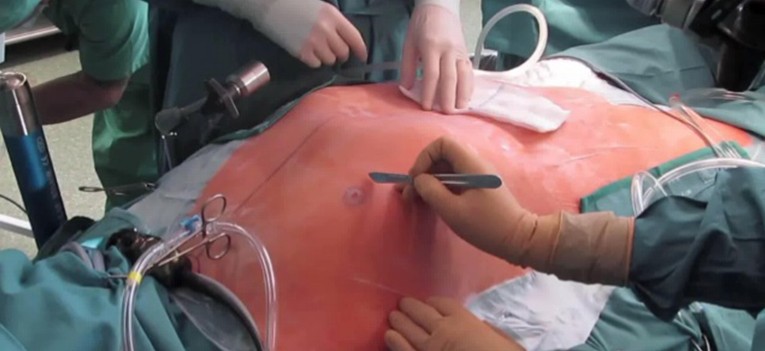Minimally invasive surgery carried by very small incision is used to access the site of surgery, causing overall less injury and early recovery. Whereas In the traditional form of surgery, called open surgery, surgeons typically make a large incision that allows complete access to the organ or area being operated upon.
Laparoscopy is the technique where one or more small incisions less than ½ inches are made and specially designed thin instruments, fibre optics and cameras are inserted. The surgeon then operates using these specialised instruments while looking at the surgical site on a monitor. Also called keyhole surgery or endoscopic surgery, laparoscopy can be used to diagnose a condition (diagnostic laparoscopy) as well as to treat it (laparoscopic surgery).
In robotic surgery, the surgeon uses a console which controls four mechanical arms that are used in the operation. The arms which are controlled by the surgeon through the console, carry out the actual procedure through small incisions, with console displaying high resolution 3-D images. The adoption of robotic surgeries is however currently limited, with most surgeons preferring laparoscopy.
Minimally Invasive Surgery is widely used today for most of the major surgical procedures across gastrointestinal, gynaecological, urological conditions among others because of the immense advantages it offers over traditional open surgery.
The Benefits of Minimally Invasive Surgery are:
1. Safer: As minimally invasive surgeries feature small incisions, the risk of infection is lower. The blood loss suffered by the patient and injury to the tissues is also much lower in these types of surgery.
2. Faster recovery: A patient heals faster due to lesser injury to the tissues in the surgery.
3. Lesser injury to tissue: The techniques used in minimally invasive surgeries enable the surgeon to reach the affected area with pinpoint accuracy using just a few small incisions, leading to reduced trauma to the body.
4. Lesser pain: The patient experiences lesser pain as the incisions are smaller and the trauma to the body is lesser as the procedure is less invasive.
5. Lesser scarring: A minimally invasive operation involves small incisions leading to fewer stiches. This results in scars that are less prominent than the scars from conventional surgeries which involve large cuts.
6. Reduced days in hospital: As the body heals faster, the number of days that the patient needs to stay in a hospital goes down significantly. Open surgeries may need anywhere from four to eight weeks for recovery, whereas minimally invasive ones need just two. So by opting for this type of surgery, the patient will be able to return to normal life much quicker. Shorter stays in hospital also helps in reducing the overall cost of the surgical procedure for the patient.
Although minimally invasive surgeries or laparoscopic surgeries are proven to be safe, not everyone is a candidate for them. Factors like high body mass index or pre-existing medical conditions can affect the decision of the type of operation to be conducted.




